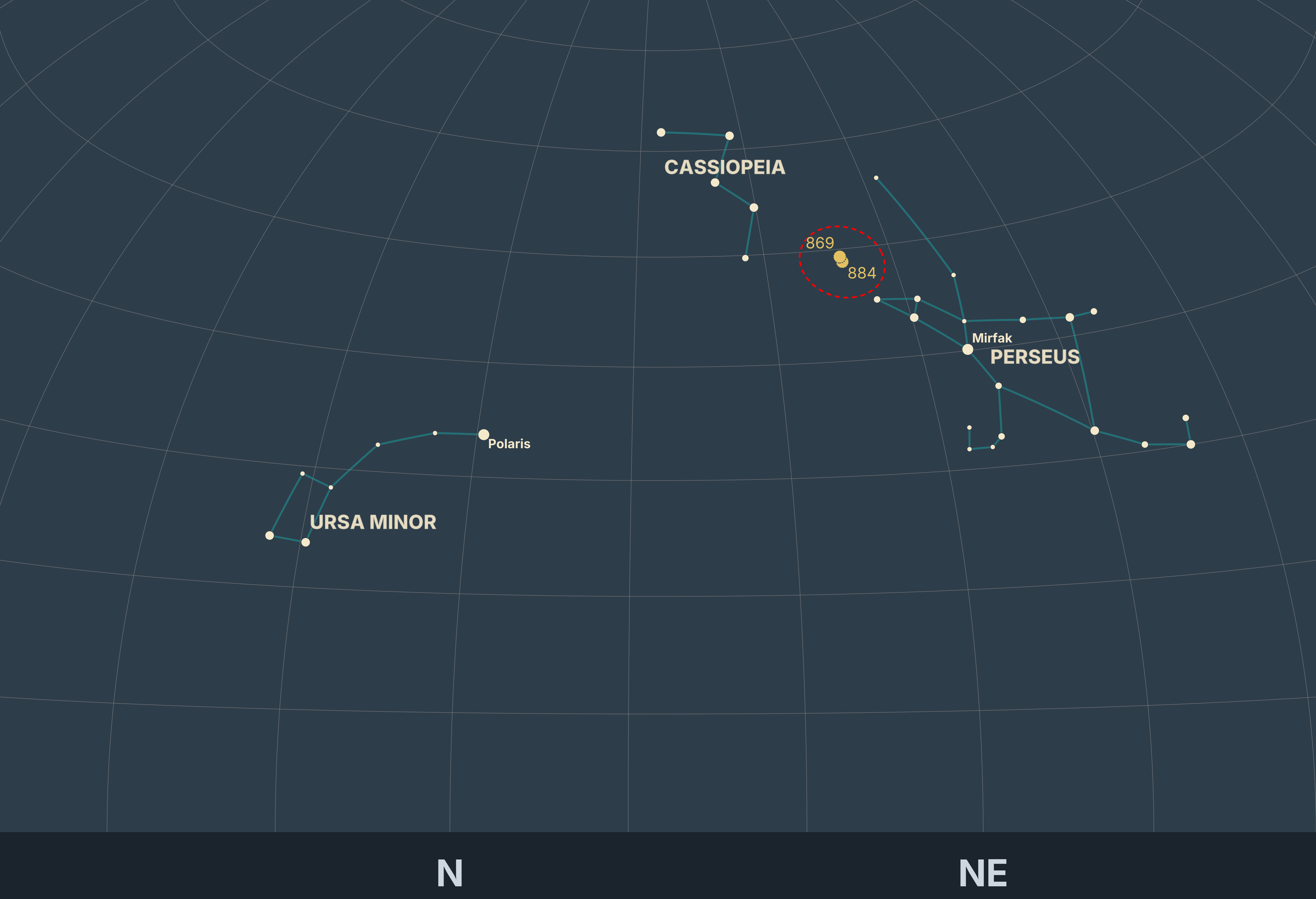Finding the Double Cluster in Perseus
Here's a chart you might create to help you find the Double Cluster (NGC 884 and 869) in Perseus and to visualize the field of view with 10x binoculars (the red dashed circle).
This example uses many of Starplot's features:
- Looking up objects
- Using properties on those objects to selectively plot stars (in this example, we use the constellation models to only plot stars that are part of the lines in the constellation)
- Defining a simple callable for labeling each open cluster
- Drawing a circle to [show the field of view for bincoulars][starplot.HorizonPlot.bino_fov]
from datetime import datetime
from zoneinfo import ZoneInfo
from starplot import (
HorizonPlot,
PlotStyle,
style_extensions,
DSO,
Constellation,
Observer,
_,
Binoculars,
)
style = PlotStyle().extend(
style_extensions.BLUE_NIGHT,
style_extensions.MAP,
style_extensions.GRADIENT_ASTRONOMICAL_TWILIGHT,
)
tz = ZoneInfo("US/Pacific")
dt = datetime(2024, 11, 2, 21, 0, 0, 0, tzinfo=tz)
observer = Observer(
dt=dt,
lat=33.363484,
lon=-116.836394,
)
cas = Constellation.get(iau_id="cas")
umi = Constellation.get(iau_id="umi")
per = Constellation.get(iau_id="per")
p = HorizonPlot(
altitude=(0, 70),
azimuth=(325, 440),
observer=observer,
style=style,
resolution=4096,
scale=1.25,
)
p.constellations(where=[_.iau_id.isin(["cas", "umi", "per"])])
p.stars(
where=[_.hip.isin(cas.star_hip_ids + umi.star_hip_ids + per.star_hip_ids)],
where_labels=[_.magnitude < 2],
)
p.style.dso_open_cluster.label.font_size = 27
p.open_clusters(
where=[_.name.isin(["NGC0884", "NGC0869"])],
true_size=False,
)
double_cluster = DSO.get(name="NGC0884")
p.optic_fov(
ra=double_cluster.ra,
dec=double_cluster.dec,
optic=Binoculars(
fov=65,
magnification=10,
),
)
p.constellation_labels()
p.horizon()
p.style.gridlines.line.width = 2
p.gridlines()
p.export("horizon_double_cluster.png", padding=0.25)
